Microeconomics Private and Public Choice
Microeconomics
( Test Bank)
Microeconomics Private and Public Choice, 15th Edition James D. Gwartney, Richard L. Stroup, Russell S. Sobel, David A. Macpherson Test Bank
Edition: 15thEdition
Author Name: James D. Gwartney, Richard L. Stroup, Russell S. Sobel, David A. Macpherson
contact:
Whatsapp +1 (949) 734-4773
for the Facebook page click here
for more books for ( Test Bank and Solution Manual) click here
sample free
Microeconomics Chapter 1—The Economic Approach
MULTIPLE CHOICE
- What do economists mean when they state that a good is scarce?
| a. |
There is a shortage or insufficient supply of the good at the existing price. |
| b. |
It is impossible to expand the availability of the good beyond the current amount. |
| c. |
People will want to buy more of the good regardless of the price of the good. |
| d. |
The amount of the good that people would like exceeds the supply freely available from nature. |
ANS: D PTS: 1 DIF: Moderate NAT: BUSPROG: Analytic
STA: DISC: Scarcity, tradeoffs, and opportunity cost TOP: What is Economics About?
KEY: Bloom’s: Comprehension MSC: Suggested Quiz
- Economic choice and competitive behavior are the result of
| a. |
basic human greed. |
| b. |
poverty. |
| c. |
private ownership of resources. |
| d. |
scarcity. |
ANS: D PTS: 1 DIF: Moderate NAT: BUSPROG: Analytic
STA: DISC: Scarcity, tradeoffs, and opportunity cost TOP: What is Economics About?
KEY: Bloom’s: Comprehension MSC: Suggested Quiz
- Jacob and Mason go to a diner that sells burritos for $5 and tacos for $3. They agree to split the lunch bill evenly. Mason chooses a taco. The marginal cost to Jacob of ordering a burrito instead of a taco is
| a. |
$1. |
| b. |
$2. |
| c. |
$2.50. |
| d. |
$3. |
ANS: A PTS: 1 DIF: Moderate NAT: BUSPROG: Analytic
STA: DISC: Marginal costs & benefits TOP: The Economic Way of Thinking
KEY: Bloom’s: Application MSC: Suggested Quiz
- The expression, “There’s no such thing as a free lunch,” implies that
| a. |
everyone has to pay for his own lunch. |
| b. |
the person consuming a good must always pay for it. |
| c. |
opportunity costs are incurred when resources are used to produce goods and services. |
| d. |
no one has time for a good lunch anymore. |
ANS: C PTS: 1 DIF: Moderate NAT: BUSPROG: Analytic
STA: DISC: Scarcity, tradeoffs, and opportunity cost
TOP: The Economic Way of Thinking KEY: Bloom’s: Comprehension
MSC: Suggested Quiz
- Which one of the following states a central element of the economic way of thinking?
| a. |
Scarce goods are priceless. |
| b. |
Incentives matter–human choice is influenced in predictable ways by changes in personal costs and benefits. |
| c. |
The realism of the assumptions is the best test of an economic theory. |
| d. |
When deciding how to allocate time, the concept of opportunity cost is meaningless. |
ANS: B PTS: 1 DIF: Moderate NAT: BUSPROG: Analytic
STA: DISC: The role of incentives TOP: The Economic Way of Thinking
KEY: Bloom’s: Comprehension MSC: Suggested Quiz
- Which of the following is most clearly consistent with the basic postulate of economics regarding the reaction of people to a change in incentives.
| a. |
Farmers produce fewer bushels of wheat in response to an increase in the price of wheat. |
| b. |
People will buy more milk at a price of $2 per gallon than at $1 per gallon. |
| c. |
People will buy less gas if the price of gas increases by $.20 per gallon. |
| d. |
People will consume more beef if the price increases from $1 to $2 per pound. |
ANS: C PTS: 1 DIF: Moderate NAT: BUSPROG: Analytic
STA: DISC: The role of incentives TOP: The Economic Way of Thinking
KEY: Bloom’s: Application MSC: Suggested Quiz
- Which one of the following is a positive economic statement?
| a. |
An increase in the minimum wage will reduce employment. |
| b. |
The minimum wage should be increased. |
| c. |
Social justice will be served by increasing the minimum wage. |
| d. |
Thoughtful people oppose an increase in the minimum wage. |
ANS: A PTS: 1 DIF: Moderate NAT: BUSPROG: Analytic
STA: DISC: Scarcity, tradeoffs, and opportunity cost
TOP: Positive and Normative Economics KEY: Bloom’s: Comprehension
MSC: Suggested Quiz
- The basic difference between macroeconomics and microeconomics is that
| a. |
macroeconomics is concerned with the forest (aggregate markets), while microeconomics is concerned with the individual trees (subcomponents). |
| b. |
macroeconomics is concerned with policy decisions, while microeconomics applies only to theory. |
| c. |
microeconomics is concerned with the forest (aggregate markets), while macroeconomics is concerned with the trees (subcomponents). |
| d. |
opportunity cost is applicable to macroeconomics, and the fallacy of composition relates to microeconomics. |
ANS: A PTS: 1 DIF: Moderate NAT: BUSPROG: Analytic
STA: DISC: Scarcity, tradeoffs, and opportunity cost
TOP: Pitfalls to Avoid in Economic Thinking KEY: Bloom’s: Comprehension
MSC: Suggested Quiz
- Economic analysis assumes that
| a. |
individuals act only out of selfish motives. |
| b. |
although individuals are at times selfish and at times unselfish, only their selfish actions may be predicted. |
| c. |
people are basically humanitarian, and their actions are, therefore, impossible to predict. |
| d. |
changes in the personal benefits and costs associated with a choice will exert a predictable influence on human behavior. |
ANS: D PTS: 1 DIF: Moderate NAT: BUSPROG: Analytic
STA: DISC: Utility and consumer choice TOP: What is Economics About?
KEY: Bloom’s: Comprehension MSC: Suggested Quiz
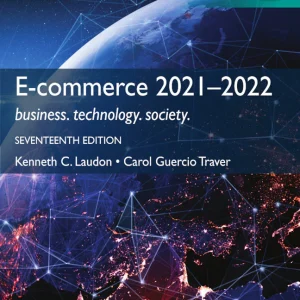 E-Commerce 2021-2022: Business, Technology and Society, 17th Global Edition Kenneth C. Laudon Carol Guercio Traver Test bank
1 × $39.00
E-Commerce 2021-2022: Business, Technology and Society, 17th Global Edition Kenneth C. Laudon Carol Guercio Traver Test bank
1 × $39.00 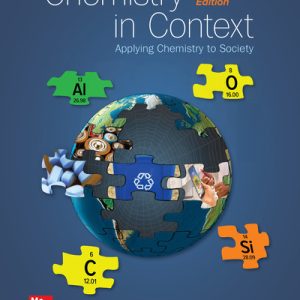 Chemistry in Context, 10th Edition American Chemical Society Test bank
1 × $44.00
Chemistry in Context, 10th Edition American Chemical Society Test bank
1 × $44.00  Better Business 5E R. Solomon, Anne Poatsy, Martin, Test Bank
1 × $29.00
Better Business 5E R. Solomon, Anne Poatsy, Martin, Test Bank
1 × $29.00  Essentials of Federal Taxation 2024 Edition, 15th Edition By Brian Spilker Solution Manual
1 × $39.00
Essentials of Federal Taxation 2024 Edition, 15th Edition By Brian Spilker Solution Manual
1 × $39.00 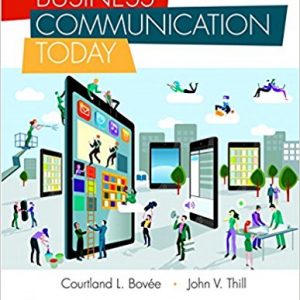 Business Communication Today, 14th Edition Courtland L. Bovee, Chair, V. Thill, Test Bank
1 × $31.00
Business Communication Today, 14th Edition Courtland L. Bovee, Chair, V. Thill, Test Bank
1 × $31.00 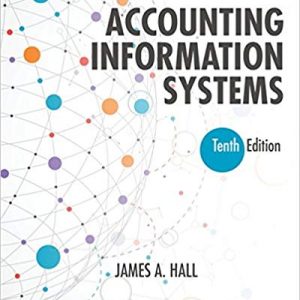 ACCOUNTING INFORMATION SYSTEMS, 10TH EDITION JAMES A. HALL SOLUTION MANUAL
1 × $33.00
ACCOUNTING INFORMATION SYSTEMS, 10TH EDITION JAMES A. HALL SOLUTION MANUAL
1 × $33.00  Advanced Accounting, Global Edition, 13E Floyd A. Beams, Joseph H. Anthony, Bruce Bettinghaus , Kenneth Smith Instructor's Solutions Manual
1 × $39.00
Advanced Accounting, Global Edition, 13E Floyd A. Beams, Joseph H. Anthony, Bruce Bettinghaus , Kenneth Smith Instructor's Solutions Manual
1 × $39.00 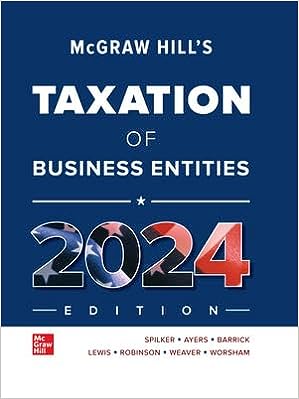 McGraw-Hill's Taxation of Business Entities 2024 Edition, 15th Edition By Brian Spilker Solution Manual
1 × $39.00
McGraw-Hill's Taxation of Business Entities 2024 Edition, 15th Edition By Brian Spilker Solution Manual
1 × $39.00 
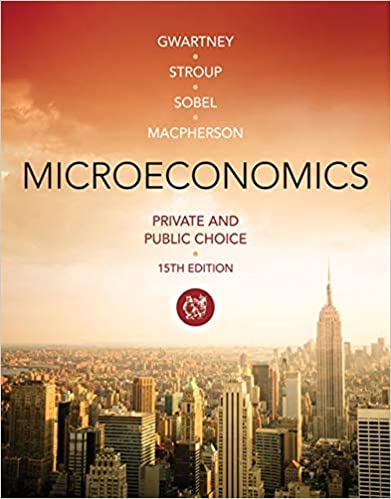

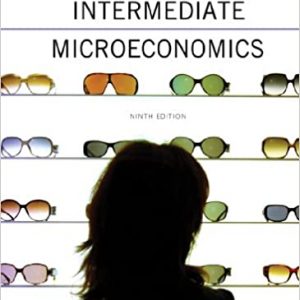
 Check the sample in the description
Check the sample in the description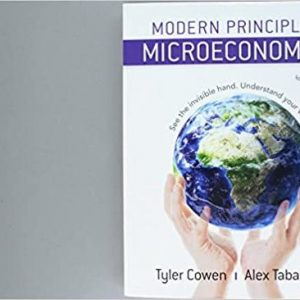
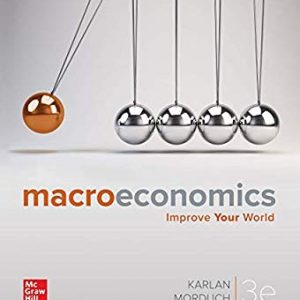

There are no reviews yet.